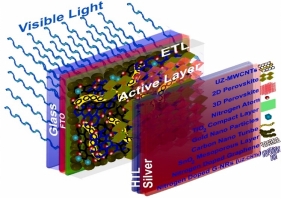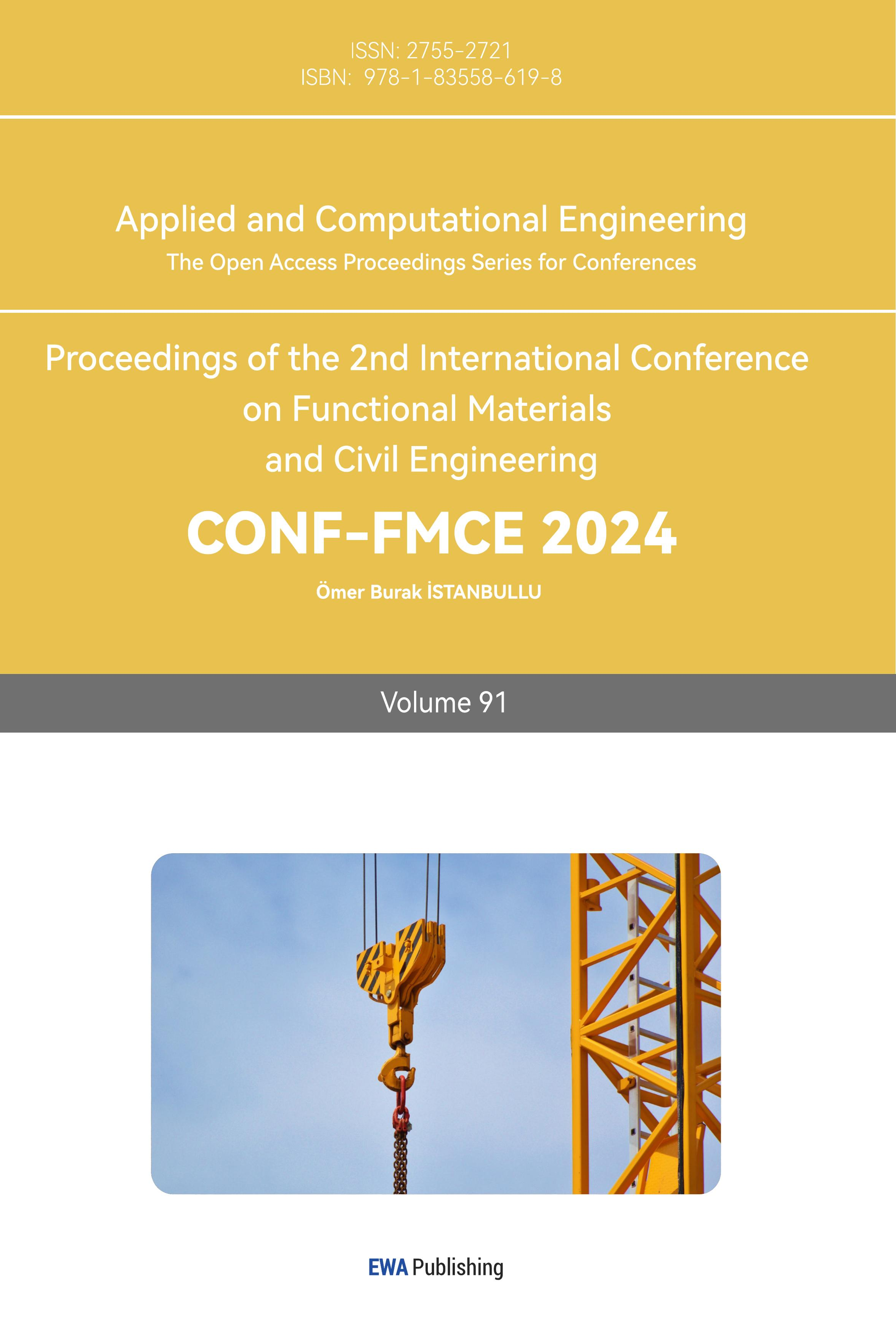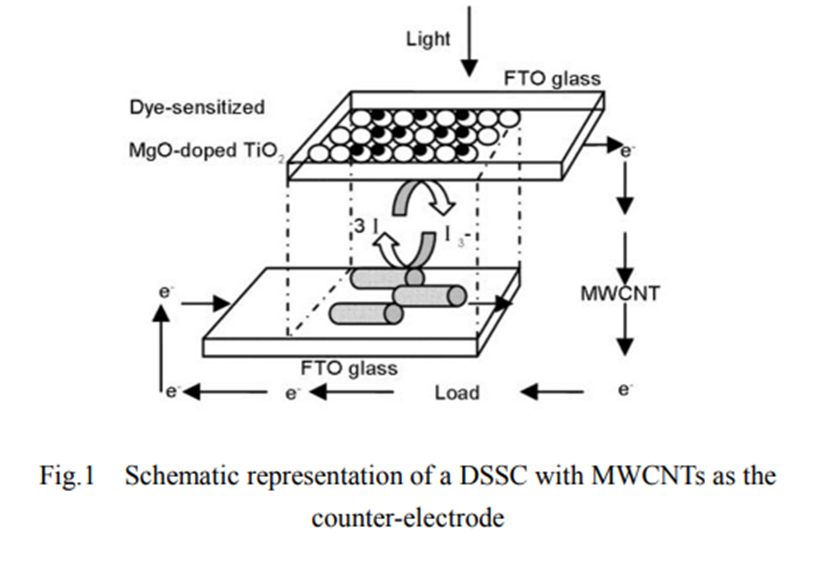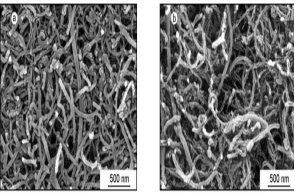1. Introduction
Based on the major strategic goal of “dual carbon” proposed in China, there is a high national focus on new energy, sustainable, clean, and low-cost nanomaterials for solar cell applications. The development of 3D materials has emerged as a prominent issue, and 3D nanomaterial batteries are a new type of battery structure. Among them, 2D and 3D perovskite batteries have attracted widespread attention due to their high efficiency and low cost. In order to find more efficient materials, this article summarizes a method to merge 2D perovskite layers into 3D structures, and with continuous investment, this field has achieved great success. In addition, through in-depth research and application of 3D large-pore ordered materials, their advantages such as high surface area, rich porosity, and promotion of substance and light interaction have been discovered, and their application in battery electrodes such as 3DOM has been found. In addition, there are still some research gaps, such as three-dimensional nanomaterials in the preparation of new solar cell equipment and higher performance research, that need to be further overcome, discovered and studied with methods with higher efficiency and better preparation processes. Research on 3D nanomaterials could help develop low-cost, environmentally friendly batteries, improve energy efficiency, and open up new avenues for future energy development, This review also discusses the prospects and challenges of the development of 3D nanomaterials in solar cells.
2. The application of different nanomaterials in batteries
The application of 3D nanomaterials in solar cells primarily involves the formation of composite material structures to improve the photoelectric conversion efficiency, reduce costs, and increase stability of solar cells through the special properties of their composite material structures. The followings are the applications of different nanomaterials in solar cells.
3D nanomaterial batteries represent a new type of battery structure. 3D nanomaterials, with their excellent performance and wide range of applications, have become popular materials in the field of solar energy. These three-dimensional composite materials, formed by the combination of zero-dimensional particles, one-dimensional nanomaterials, and two-dimensional nanomaterials, offer remarkable advantages in terms of stability, environmental friendliness, and sustainability. Notably, three-dimensional nanomaterials such as 3DOM, three-dimensional carbon nanotube composites, and composite structures in 2D/3D perovskite soar cells all exhibit promising potential for enhancing the performance of solar cells.
The 3D large-pore ordered materials have a larger surface area, unique optical properties, and excellent mass transfer performance, which can improve the adsorption of dye molecules and capture rate. Moreover, they promote the interaction between materials and light, thus exhibiting significant potential in the realm of solar cell applications. For example, in dye-sensitized solar cells (DSSCs), 3DOM TiO2 thin films serve as photoelectric anodes. Their large-pore structure with a large surface area, good light response, and high conductivity, facilitate the promotion of redox reactions in the electrolyte. Due to the good three-dimensional interwoven, ordered large-pore structure, it can reduce the penetration resistance, improve the diffusion and electron migration efficiency of the electrolyte, and significantly increase the photovoltaic efficiency.
As one of the important components of dye-sensitized batteries, the photoanode not only acts as a channel for the transmission of photogenerated electrons to the transparent conductive oxide substrate but also allows for efficient diffusion of the electrolyte to the anchored dye molecules. It can be said that the photoanode is an important part of ensuring the high power conversion rate and the stability of the related period of DSSCs [1]. According to previous studies, short circuit current (Jsc) of the devices is related to electron transfer efficiency, light scattering, and dye absorption, while the open circuit voltage (Voc) is mainly determined by the energy difference between the material’s Fermi level and the Nernst potential of the redox pair [2-3].
The layered three-dimensional ordered structure in 3D ordered macro/mesoporous TiO2 (3DOM/m TiO2) can mitigate electron recombination to some extent, thereby accelerating efficient electron to the electron collector and increasing electron mobility. At the same time, the increased porosity and specific surface area of electrons promote the amount of dye absorption, and through the porous structure, it becomes a light scattering center that is conducive to light collection. The application of this three-dimensional hierarchical macro/meso-TiO2 structure holds great promise for advancing novel electrode materials with high conversion efficiency and excellent stability.
3. Battery architecture using 3D nanomaterials
The development of solar cells is closely tied to the choice of materials, as different materials give arise to special structures with different characteristics. Among these, the utilization of 3D nanomaterials in battery architecture has emerged as a prominent research area. 3D nanocomposite materials are inseparable from practical applications. 3D nanostructures need to ensure the stability of the structural framework while maintaining the original characteristics of nanomaterials. Notable current architectural approaches encompass three-dimensional network structures in organic solar cell acceptor materials, mixed 2D and 3D perovskite heterostructures in perovskite solar cells, the layered three-dimensional ordered structure in the aforementioned 3DOM/m TiO2, etc [4]. The following takes dye-sensitized batteries and 2D/3D perovskite solar cells as examples.
3.1. Dye-Sensitized batteries
Dye-sensitized batteries possess the advantages of convenient assembly, high cost-effectiveness, a high power conversion rate, relatively stable performance. As an ideal new energy renewable energy source, their success lies in the introduction of nanomaterials as battery electrodes [5].
Among them, three-dimensional multi-walled carbon nanomaterials are quite special. Their bamboo-like structure has rich edge defects, which can overcome the disadvantage of absorbing a small amount of sunlight by absorbing a dye monolayer, and then produce a larger photocurrent by continuous reflection within the film [6]. It promotes the electron transfer dynamics at the electrode- electrolyte interface and greatly improves the energy conversion efficiency.
Zheng Wei, Tao Qi and others conducted research on the preparation and characterization of multi-walled carbon nanotube materials in the electrodes of dye-sensitized batteries. They successfully developed a counter electrode (CE) for dye-sensitized solar cells (DSSCs) [7]. Due to the excellent conductivity and mechanical properties of carbon nanomaterials, graphene CEs have been extensively used to improve their performance in DSSCs. CE materials are all three-dimensional (3D) materials, and can be divided into two types. Dr. Xue Yuhua prepared N-doped graphene foam on a piece of graphene paper and Dr. Li Shuxian manufactured carbon nanotubes as CEs to improve their catalytic activity [8]. The main approach involves using multi-walled carbon nanotube (MWCNTs) as the 3D matrix with nano graphite powder serving as a filler to create CE films on fluorine tin oxide glass. By placing MWCNTs in a strong acid environment to reduce aggregation and using nano graphite powder to increase conductivity, Figure 1 illustrates the working principle of DSSCs with CEs applied to electrodes in the laboratory settings. The composite 3D structure in this device is conducive to accelerating the rate of electron transfer channels between MWCNTs and fluorine tin oxide (FTO) [7].
|
|
Figure 1. Schematic representation of a DSSC with MWCNTs as the counter-electrode [7] | Figure 2. SEM images of the counter-electrodes (a) before and (b) after the acid oxidition [7] |
The performance of MWCNTs is characterized by the electrochemical impedance spectra (EIS), Cyclic voltammetry curve (CV), and Volt-ampere characteristic curve (I-V) analysis of the photoelectric properties of DSSCs. Figure 2 illustrates this characterization, where panel (a) and (b) depict high magnification images of MWCNTs on the substrate before and after acid oxidation, respectively. The three-dimensional meso-porous network is formed by multi-walled carbon nanotubes. From this, the characteristics of MWCNTs can be analyzed with a rough surface and a higher specific surface area, which is conducive to the catalysis of CEs. After acid oxidation treatment, the contact between the electrode and the electrolyte is increased. The increase in surface defects and porosity of MWCNTs promotes an increase in specific surface area and catalytic activity. The nano graphite material will enter the pores to form a porous network structure with excellent electrical conductivity, improving the conductivity of the electrode. At the same time, CE materials have good reversibility and stability.
In addition, the research also shows that acid oxidation and nanographite are beneficial to improve conductivity and the photoelectric properties of the battery. However, MWCNTs may weaken the adhesion of the bottom plate, eventually leading to detachment during operation. Research by Tong Jiawei and others has shown that the ionic liquid modification of MWCNTs has maintained good wettability and enhanced thermal conductivity, which can effectively improve the dispersibility and adhesion of MWCNTs in the liquid. This solves the hidden danger of the problem [9].
3.2. Perovskite solar cells (PSCs)
Carrier transport is an important step in promoting the efficiency of the formation of more efficient and stable perovskite solar cells. In their reseach, Saba Rasheed et al. demonstrated the utilization of a new electron transport layer (ETL) comprising tin oxide, graphene nanoribbons (GNRs), nitrogen-doped GNRs(N.GNRs), and gold nanoparticles(Au-NPs). They also proposed three 2D/3D perovskite solar cell architecture as well as the impact on solar cells. These advancements greatly improve the photovoltaic conversion efficiency (PCE) of solar cells.
Although two-dimensional nanomaterials show good characteristics in solar cells, their limited carrier transport rate and narrower absorption range hinder satisfactory PCE results. To address this issue, 2D/3D perovskite batteries have attracted attention. The 2D layer can act as a moisture-proof protective cover safeguarding the 3D layer from degradation. The selection of suitable ETL materials is critical for PSCs performance; among them, metal oxides such as tin oxide (SnO2) and titanium dioxide (TiO2) are commonly employed as ETL materials in perovskite solar cells (PSCs) due to their stability and electron conductivity and other advantages. The three structures are TiO2/SnO2/GNRs/PSC, c. TiO2/SnO2/GNRs/N.GNRs/Au-NPs/PSC, and c. TiO2/SnO2/GNRs/N.GNRs/PSC.

Figure 3. Schematic diagram of c. TiO2/SnO2/GNRs/N.GNRs/Au-NPs/Perovskite/PEDOT: PSS/Ag Perovskite Solar Cell [10]
As shown in Figure 3, the three perovskite structures are all composed of FTO glass, which should be cleaned following the standard procedure. After air-drying at room temperature, the pristine FTO glass can exhibit enhanced performance. The second step is to deposit a dense TiO2 layer. The third step shows different constructions for the three structures. The first sample uses deionized water to make a graphene nanoribbon solution by ultrasonic treatment. In the second sample, nitrogen-doped graphene nanoribbons are formed via probe ultrasonication. And in the third structure, additional components such as gold nanoparticles are incorporated. Subsequently, analysis methods such as ultraviolet-visible spectroscopy were used to detect that the third structure had a smaller band gap and smaller interface resistance with the addition of gold nanoparticles, which is conducive to carrier transport. It also indicates the resonance characteristics of plasmonic nanomaterials, which can better promote charge transfer and achieve higher efficiency [10].
4. Challenges and development trends of solar cells based on 3D nanomaterials
Due to the defects in two-dimensional nanomaterial solar cells, the development of three-dimensional nanomaterials is being focused on [11]. For 3D large-pore ordered materials, the large pore morphology may lead to structural instability and photocatalytic performance is far from ideal in practical application. There are not many types of materials that can be coupled, which is an important problem to be solved for large-scale applications [12]. At the same time, 3D nanomaterials in solar cells, taking 3D perovskite batteries as an example, reduce interface recombination, which also causes the loss of charge transfer, and the extraction and transmission efficiency issues in the three-dimensional grid holes still need to be further improved, and a subsequent study of 2D/3D heterostructures showed higher photoelectric performance and stability [13-14]. And multi-walled composite carbon nanotubes in the application process will also be affected by the solvent environment for a long time. Corrosion impacts long-term performance, and how to balance their own characteristics to adapt to different scenes is still a big challenge.
5. Conclusion
It can be seen that the use of three-dimensional nanomaterials in solar cells can increase the efficiency of light capture and collection capacity of the cell due to its large specific surface area. The three-dimensional spatial grid structure with multi-stage pore structure, porous, large pore, and multi-layer can increase the ability of light reflection and scattering, the light utilization efficiency, and the space utilization rate of materials to a certain extent. It also has the characteristics of an optimized charge transfer path and can freely design a unique charge transfer channel, which can reduce the recombination rate of three-dimensional material space so as to better improve the photoelectric conversion efficiency. At the same time, perovskite solar cells and dye-sensitized cells composed of three-dimensional materials have made progress in stability and light utilization, and the three-dimensional heterogeneous structure in perovskite solar cells better changes the interface quality, reduces the resistance between the electron/hole transport layer, reduces the energy loss during charge transfer, and also improves the environmental adaptability of the battery.
In addition, dye-sensitized battery CE materials improve the stability and activity of the battery, but the adhesion problem also leads to certain hidden dangers, and the ionic liquid modification just solves this problem. Therefore, three-dimensional nanomaterials play an important role in sustainable development and are widely used in solar cells, and their new structural design, material synthesis, photovoltaic conversion, and other characteristics are of great significance for battery research. With the deepening of research, some new three-dimensional nanomaterials in the preparation of photovoltaic cells and performance research gaps and problems will be solved, while there will be more new materials and structures to further improve the photoelectric conversion rate, promote the development of existing technologies, and provide a new path for future sustainable development.
References
[1]. Hao, Li, et al., Self-assembled 3DOM macro/mesoporous TiO2 photoanodes for dye-sensitized solar cells, Applied Surface Science, 2018(439): 1026–33. https://doi.org/10.1016/j.apsusc.2017.12.221
[2]. Liang, Chen, et al., Enhanced Photovoltaic Performance of a Dye-Sensitized Solar Cell Using Graphene–TiO2 Photoanode Prepared by a Novel in Situ Simultaneous Reduction-Hydrolysis Technique, Nanoscale 5, 2013(08): 3481–85, https://doi.org/10.1039/C3NR34059G
[3]. Nailiang, Yang, et al., Two-Dimensional Graphene Bridges Enhanced Photoinduced Charge Transport in Dye-Sensitized Solar Cells, ACS Nano 4, 2010(03): 887–94, https://doi.org/10.1021/nn901660v
[4]. Xin, Li, et al., Advances in Mixed 2D and 3D Perovskite Heterostructure Solar Cells: A Comprehensive Review, Nano Energy, 2023(118): 108979. https://doi.org/10.1016/j.nanoen.2023.108979
[5]. Prem, Singh, Saud, et al., Dye-Sensitized Solar Cells: Fundamentals, Recent Progress, and Optoelectrical Properties Improvement Strategies, Optical Materials 2024(150): 115242. https://doi.org/10.1016/j.optmat.2024.115242
[6]. Won, Jae, Lee, et al., Efficient Dye-Sensitized Solar Cells with Catalytic Multiwall Carbon Nanotube Counter Electrodes, ACS Applied Materials & Interfaces 1, 2009(06): 1145–49. https://doi.org/10.1021/am800249k
[7]. Wei, Zheng, et al., Fabrication and Characterization of a Multi-Walled Carbon Nanotube-Based Counter Electrode for Dye-Sensitized Solar Cells, New Carbon Materials 30, 2015(05): 391–96. https://doi.org/10.1016/S1872-5805(15)60198-6
[8]. Yuhua, Xue, et al., Nitrogen‐Doped Graphene Foams as Metal‐Free Counter Electrodes in High‐Performance Dye‐Sensitized Solar Cells, 2024. https://doi.org/10.1002/anie.201207277
[9]. Jiawei, Tong, et al., Tribological properties of ionic liquid modified MWCNTs, MoS2 and their composite nanofluids, Journal of Engineering science 45, 2023(02): 286–94. https://doi.org/10.13374/j.issn2095-9389.2021.08.05.004
[10]. Saba, Rasheed, et al., Comparative Study of 2D/3D Hybrid Perovskite Solar Cell Containing Different Modified Carbon Nanomaterials Based Electron Transport Layers (ETL), Optical Materials, 2023(144): 114364. https://doi.org/10.1016/j.optmat.2023.114364
[11]. Shreya, et al., Emerging Advances and Future Prospects of Two Dimensional Nanomaterials Based Solar Cells, Journal of Alloys and Compounds, 2024(1001): 175063. https://doi.org/10.1016/j.jallcom.2024.175063
[12]. R, Guo, et al., Recent Progress of Three‐dimensionally Ordered Macroporous (3DOM) Materials in Photocatalytic Applications: A Review, Wiley Online Library, 2024. https://onlinelibrary.wiley.com/doi/full/10.1002/smll.202207767
[13]. R, Lin, et al., All-Perovskite Tandem Solar Cells with 3D/3D Bilayer Perovskite Heterojunction, Nature, 2023. https://www.nature.com/articles/s41586-023-06278-z?utm_source=xmol&utm_medium=affiliate&utm_content=meta&utm_campaign=DDCN_1_GL01_metadata.
[14]. Pengwei, Li, et al., Phase Pure 2D Perovskite for High-Performance 2D–3D Heterostructured Perovskite Solar Cells, Advanced Materials 30, 2018(52): 1805323. https://doi.org/10.1002/adma.201805323
Cite this article
Sun,B. (2024). Advances and Prospects of 3D Semiconductor Nanocomposite Materials for Solar Cells in Renewable Energy. Applied and Computational Engineering,91,21-26.
Data availability
The datasets used and/or analyzed during the current study will be available from the authors upon reasonable request.
Disclaimer/Publisher's Note
The statements, opinions and data contained in all publications are solely those of the individual author(s) and contributor(s) and not of EWA Publishing and/or the editor(s). EWA Publishing and/or the editor(s) disclaim responsibility for any injury to people or property resulting from any ideas, methods, instructions or products referred to in the content.
About volume
Volume title: Proceedings of the 2nd International Conference on Functional Materials and Civil Engineering
© 2024 by the author(s). Licensee EWA Publishing, Oxford, UK. This article is an open access article distributed under the terms and
conditions of the Creative Commons Attribution (CC BY) license. Authors who
publish this series agree to the following terms:
1. Authors retain copyright and grant the series right of first publication with the work simultaneously licensed under a Creative Commons
Attribution License that allows others to share the work with an acknowledgment of the work's authorship and initial publication in this
series.
2. Authors are able to enter into separate, additional contractual arrangements for the non-exclusive distribution of the series's published
version of the work (e.g., post it to an institutional repository or publish it in a book), with an acknowledgment of its initial
publication in this series.
3. Authors are permitted and encouraged to post their work online (e.g., in institutional repositories or on their website) prior to and
during the submission process, as it can lead to productive exchanges, as well as earlier and greater citation of published work (See
Open access policy for details).
References
[1]. Hao, Li, et al., Self-assembled 3DOM macro/mesoporous TiO2 photoanodes for dye-sensitized solar cells, Applied Surface Science, 2018(439): 1026–33. https://doi.org/10.1016/j.apsusc.2017.12.221
[2]. Liang, Chen, et al., Enhanced Photovoltaic Performance of a Dye-Sensitized Solar Cell Using Graphene–TiO2 Photoanode Prepared by a Novel in Situ Simultaneous Reduction-Hydrolysis Technique, Nanoscale 5, 2013(08): 3481–85, https://doi.org/10.1039/C3NR34059G
[3]. Nailiang, Yang, et al., Two-Dimensional Graphene Bridges Enhanced Photoinduced Charge Transport in Dye-Sensitized Solar Cells, ACS Nano 4, 2010(03): 887–94, https://doi.org/10.1021/nn901660v
[4]. Xin, Li, et al., Advances in Mixed 2D and 3D Perovskite Heterostructure Solar Cells: A Comprehensive Review, Nano Energy, 2023(118): 108979. https://doi.org/10.1016/j.nanoen.2023.108979
[5]. Prem, Singh, Saud, et al., Dye-Sensitized Solar Cells: Fundamentals, Recent Progress, and Optoelectrical Properties Improvement Strategies, Optical Materials 2024(150): 115242. https://doi.org/10.1016/j.optmat.2024.115242
[6]. Won, Jae, Lee, et al., Efficient Dye-Sensitized Solar Cells with Catalytic Multiwall Carbon Nanotube Counter Electrodes, ACS Applied Materials & Interfaces 1, 2009(06): 1145–49. https://doi.org/10.1021/am800249k
[7]. Wei, Zheng, et al., Fabrication and Characterization of a Multi-Walled Carbon Nanotube-Based Counter Electrode for Dye-Sensitized Solar Cells, New Carbon Materials 30, 2015(05): 391–96. https://doi.org/10.1016/S1872-5805(15)60198-6
[8]. Yuhua, Xue, et al., Nitrogen‐Doped Graphene Foams as Metal‐Free Counter Electrodes in High‐Performance Dye‐Sensitized Solar Cells, 2024. https://doi.org/10.1002/anie.201207277
[9]. Jiawei, Tong, et al., Tribological properties of ionic liquid modified MWCNTs, MoS2 and their composite nanofluids, Journal of Engineering science 45, 2023(02): 286–94. https://doi.org/10.13374/j.issn2095-9389.2021.08.05.004
[10]. Saba, Rasheed, et al., Comparative Study of 2D/3D Hybrid Perovskite Solar Cell Containing Different Modified Carbon Nanomaterials Based Electron Transport Layers (ETL), Optical Materials, 2023(144): 114364. https://doi.org/10.1016/j.optmat.2023.114364
[11]. Shreya, et al., Emerging Advances and Future Prospects of Two Dimensional Nanomaterials Based Solar Cells, Journal of Alloys and Compounds, 2024(1001): 175063. https://doi.org/10.1016/j.jallcom.2024.175063
[12]. R, Guo, et al., Recent Progress of Three‐dimensionally Ordered Macroporous (3DOM) Materials in Photocatalytic Applications: A Review, Wiley Online Library, 2024. https://onlinelibrary.wiley.com/doi/full/10.1002/smll.202207767
[13]. R, Lin, et al., All-Perovskite Tandem Solar Cells with 3D/3D Bilayer Perovskite Heterojunction, Nature, 2023. https://www.nature.com/articles/s41586-023-06278-z?utm_source=xmol&utm_medium=affiliate&utm_content=meta&utm_campaign=DDCN_1_GL01_metadata.
[14]. Pengwei, Li, et al., Phase Pure 2D Perovskite for High-Performance 2D–3D Heterostructured Perovskite Solar Cells, Advanced Materials 30, 2018(52): 1805323. https://doi.org/10.1002/adma.201805323











